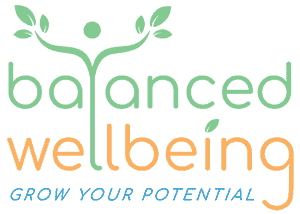With the onslaught of returning to some form of normality, dealing with the end of the school year, and with Christmas looming, tension headaches can be a problem for some. So, I thought I would share this very informative newsletter on tips to avoid headaches. I read it on a newsletter I subscribe to from Alive Physio & Wellness. I have the kind permission of Shilani, the Practice Manager, to share it with you. Hope it helps.
If you’ve ever suffered from headache pain, you know just how debilitating it can be. You simply can’t look, feel or perform your best if you have a headache.
Cervicogenic or neck headaches can originate from a number of structures in your neck, including your upper neck joints, neck muscles and your nerves. They are sometimes mistaken for migraines because they can give pain in a similar area.
Some of the causes for these headaches include:
- Poor posture
- Stiffness of the joints in the neck and upper back
- Muscle imbalances (muscle tightness + muscle weakness)
- Previous neck trauma (ex: whiplash, sports injury)
Three signs it might be a neck headache
- The pain radiates from back to front and is usually one-sided. Many people have a sense that their headache is ‘coming from their neck’. You may feel the pain is coming from the back of the head, or you may be able to reproduce your headache when you put pressure on the base of your skull.
- Your neck feels restricted or your pain is altered by neck movements/positions. You may have noticed a mild loss of movement in your neck (like turning your head to one side). Your headache may be provoked by a certain neck movement (eg. looking over your shoulder) or a sustained position (eg. stomach sleeping)
- Physiotherapy treatment of your neck alters or improves your headaches almost immediately if your neck is even partly responsible for your headache. It will usually give immediate relief, however even an initial aggravation of the headache can be a positive sign that the headache is neck-related.
Tips to avoid headaches:
1. Avoid foods that trigger headaches
2. Avoid common allergens
3. Get plenty of sleep by following a regular sleep schedule
4. Stay hydrated
5. Moderate alcohol intake
6. Minimize chemicals in your food by eating whole, organic plant foods and avoiding processed foods.
7. Get regular exercise
8. Engage in regular stress reduction activities such as meditation
9. Avoid caffeine or just reduce your intake and follow your latte with a big gulp of water.
10. Don’t smoke
11. Eat foods with Omega-3 fatty acids, which have an anti-inflammatory effect.
12. Avoid using chemical-based cleaning products and air fresheners around your house
13. Learn your headache triggers
14. Maintain your neck mobility with regular treatment from your physiotherapist.
Treatment for Cervicogenic headaches involves:
– Joint mobilisations
– Stretching tight muscles
– Strengthening weak Muscles
– Posture Correction strategies
– Massage and trigger point release
Modalities – heat can often be used in conjunction with manual techniques.
Dry needling to release trigger points and release endorphins.
Using a CranioCradle to release tight muscles.
There are many types of headaches with a great variety of causes. Finding out your type of headache will help you find the best possible treatment for it.
If any of these factors are getting in the way of a healthier you, call me to discuss what’s possible. I’ve been in private practice since 2004. My expertise lies in helping people challenge their self-limiting beliefs, achieve their goals, and realise a purposeful life. I’m trained in helping people explore motivational strategies to help them change health preventing habits.
If you want to find a balance between a healthy mind and a healthy body, then let me support you to:
- Reduce your Stress
- Reach your Goals
- Reignite your Vitality


